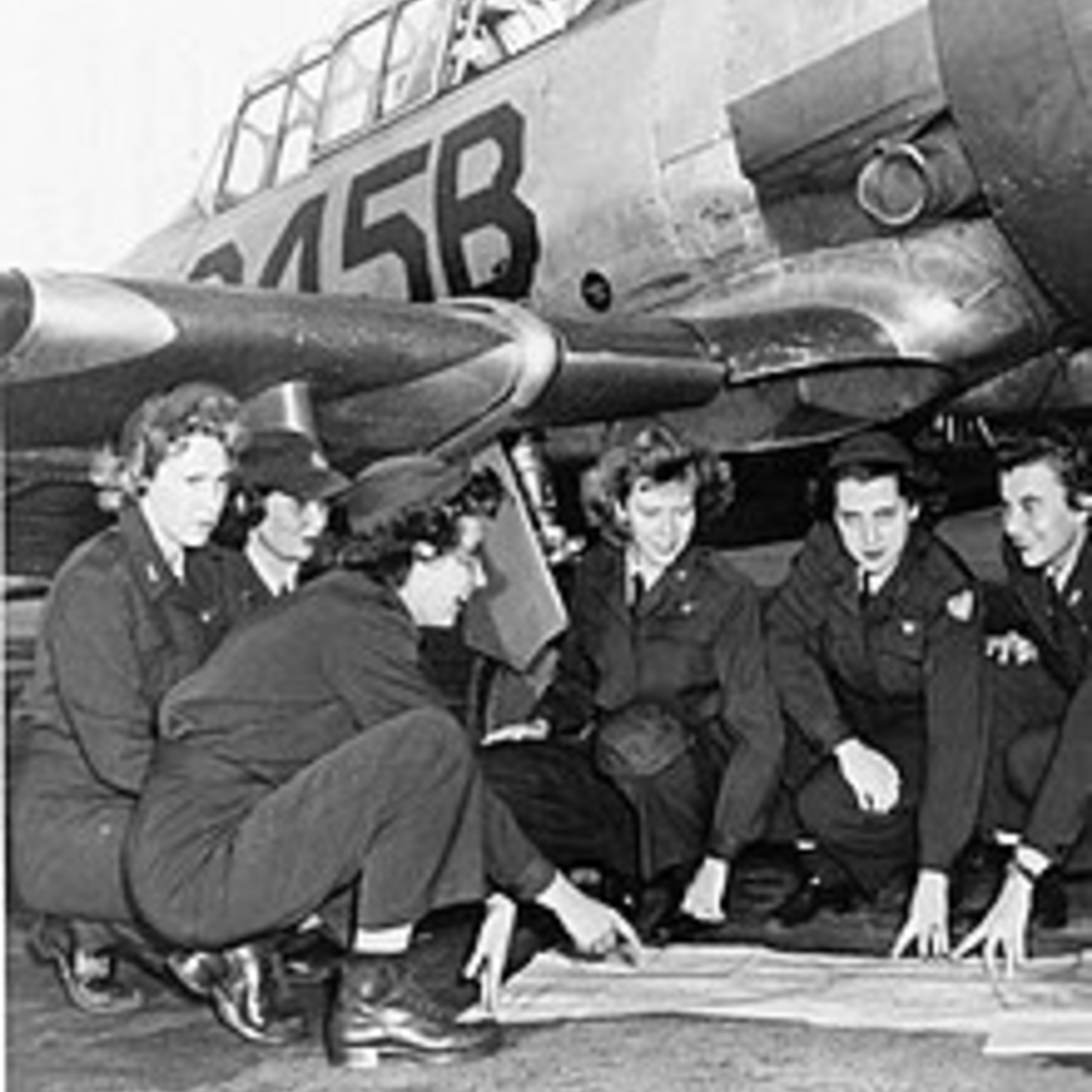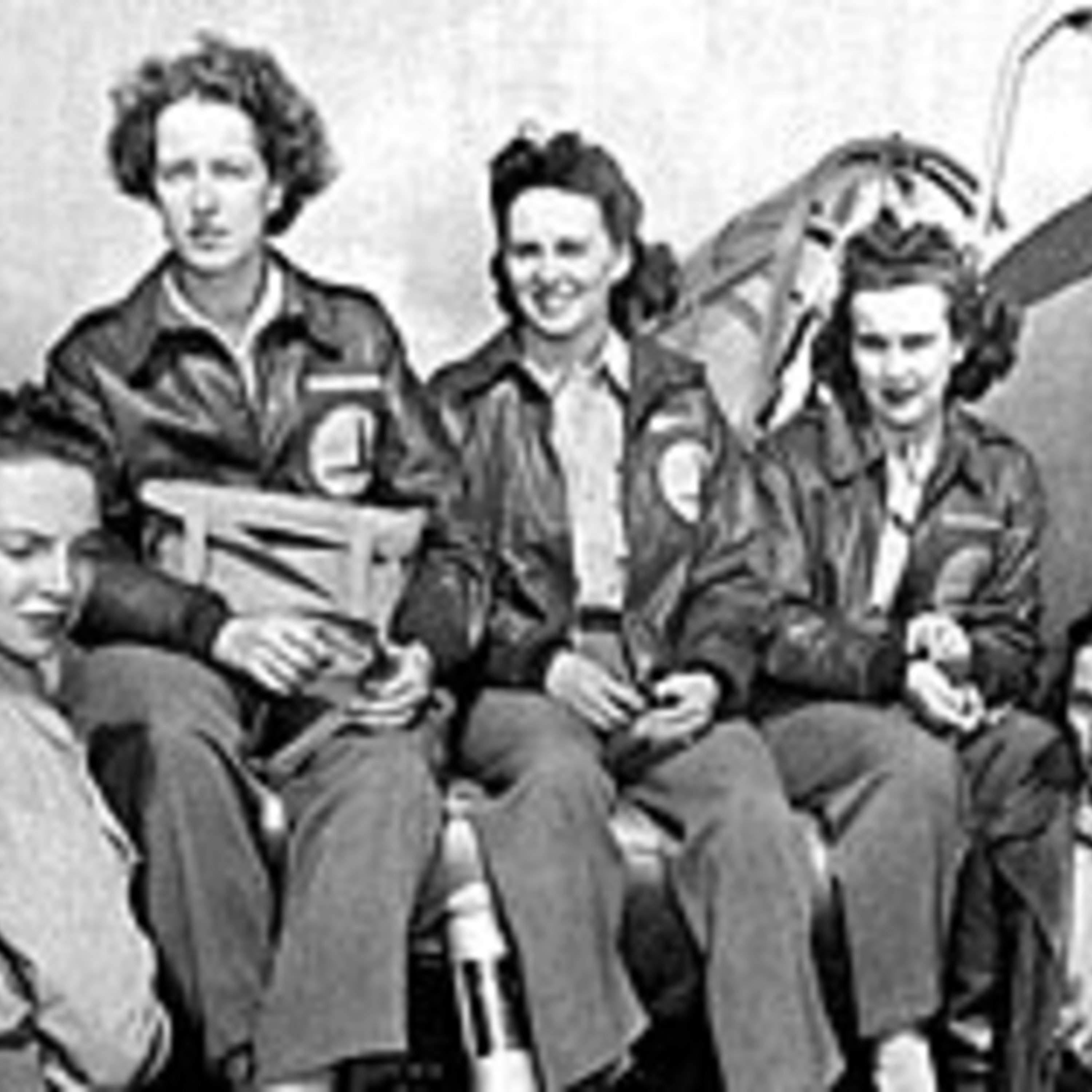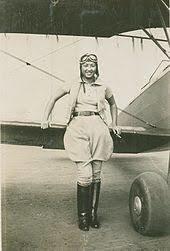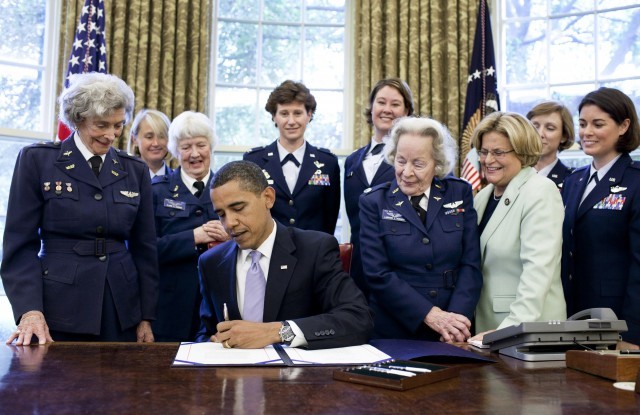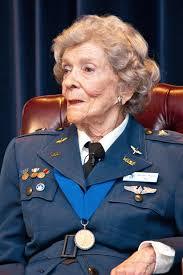Women Airforce Service Pilots
In 1942, when the attack on Pearl Harbor took place, trained male pilots were scarce and the U.S. Military was in need of more pilots for domestic duties, such as flight-testing and ferrying aircraft. The Women Airforce Service Pilots (WASP) program was created in 1943 by combining two civilian pilot programs for women within the Army Air Forces. These two programs were the Women’s Auxiliary Ferrying Squadron (WAFS) started by pilot Nancy Harkness Love and the Women’s Flying Training Detachment (WFTD) created by Pilot Jacqueline Cochran. Although the United States Military approved the Women Airforce Service Pilots program, the WASPs still officially held civilian status.
WASP training was twenty seven weeks and was very similar to male Airforce cadet training. WASP women studied weather, navigation, physics, math etc. Eighteen classes of WASPs graduated from training at Avenger Field in Sweetwater, TX during the war. This was a total of 1,074 women.
Although these women did not serve in combat roles, the WASPs served in dangerous missions that required the utmost confidence and skill. Ferrying military planes and towing gunnery targets were the primary duties of the Women Airforce Service pilots during the war. WASP missions also included flight testing every type of military aircraft.
Women in WASP experienced daily gender discrimination as they worked closely with male pilots. Nonetheless, they continued to complete their missions and serve their country despite these obstacles. WASP, Hazel Ying Lee was the first Chinese-American woman to fly in the United States Military, as well as one of the first women to fly fighter planes in the US military. Lee was also the first Chinese-American woman to die in service to the United States.
In 1944, during the same month as the D-Day Invasion, WASPs Dora Dougherty and Dorothea Johnson Moorman flight tested the Boeing B-29 bomber Superfortress “Ladybird” for Colonel Paul Tibbets. They were involved in the testing due to male Airforce pilots refusing to complete the task as they believed the mission was too dangerous. WASPs Dougherty and Moorman despite an engine fire during flight, successfully piloted the bomber.
Colonel Tibbets recalled that, “They did the job. And I don't know how we could have gotten people to fly B-29 airplanes without them.” Tibbets later served on the Manhattan Project and piloted the B-29 bomber Superfortress “Enola Gay” that dropped the first atomic bomb over Hiroshima in August 1945 at the end of World War II. Without the brave women of WASP, the B-29 Bomber would not have been flown during WWII.
Flying Dreams: Women Airforce Pilots in WWII: https://www.youtube.com/watch?v=PJnUfz7Ebro
The WASP program was disbanded in December of 1944, eight months before the end of World War II. WASP was the only branch of women’s service in World War II that did not receive military status. According to historians, one of the major reasons for the early deactivation of the WASP program was due to the opposition from male pilots who were heavily concerned that female pilots would take their jobs.
Options for WASPs were extremely limited once the program was disbanded. In 1948, it became possible for women to serve in the Air Force, or WAF, although they were permitted from piloting aircraft. Some women continued to fly planes in their free time, but most quit flying altogether.
It was not until November of 1977 when President Jimmy Carter signed Public Law 95-202 which gave the women who served as civilian Airforce pilots during WWII veteran status. Later in 2009, President Barack Obama signed a bill in an effort to award the WASPs with Congressional Gold Medals, one of the highest civilian honors awarded by the United States Congress.
The WASP women created a legacy of female empowerment as they blazed the trail for future women to serve in the United States Air Force. These women who served in WASP, also known as the “Avenger Girls,” are true superheroes in aviation history.
To learn more, go to... https://www.womenshistory.org/exhibits/women-airforce-service-pilots-wasps-wwii



